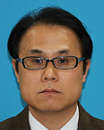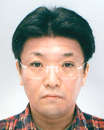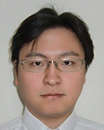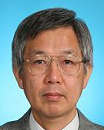「Disaster Information Collection with Opportunistic Communication and Message Aggregation」
2014年度論文賞受賞者の紹介
Disaster Information Collection with Opportunistic Communication and Message Aggregation
[Journal of Information Processing Vol.22 No.2, pp.106-117]
[論文概要]
When a large-scale disaster strikes, the communications infrastructure is usually unavailable. However, accurate and timely information of the disaster area is important because first responders rely on this information to assess the situation in the affected area and to provide an effective and immediate assistance. In this paper, a data collection method from an area of interest (AoI) within the disaster zone is proposed that uses the mobile phones of the people to serve as sensing nodes. In order for maximum AoI coverage to be achieved while minimizing delay, we propose a disruption tolerant network (DTN)-based data aggregation method. In this method, mobile phone users create messages containing disaster-related information and merge them with their respective coverage areas resulting in a new message with the merged coverage. The merging or aggregation of multiple messages will reduce message size and minimize the overall message collection delay. However, simply merging the messages can result in duplicate counting thus, to prevent this, a Bloom filter is constructed for each message. Also, to reduce further the message delivery time, the expected reaching time of a node to its destination is introduced as a routing metric. Through computer simulation with a real geographical map, the proposed method achieved a 9.7% decrease in information collection delay confirming that the proposed method achieved a smaller delay with a smaller number of total exchanged messages in collecting disaster information covering the AoI than epidemic routing.
[推薦理由]
災害時にAOI (area of interest) から必要な情報を収集するための技術として,被災地域で携帯電話から送信された災害に関する情報を、カバーエリアを考慮しつつ集約する disruption tolerant network (DTN)-based data aggregation method を提案している.実際の地図を用いたコンピュータシミュレーションにより提案手法の有効性を確認している.新規性、有効性ともに高く評価でき、論文賞に相応しい論文である。

Jovilyn Therese B. Fajardo
She received her B.S. and M.S. degrees from Ateneo de Manila University, Philippines in 2007, and 2010, respectively. She received her Eng.D. degree from the Graduate School of Information Science at Nara Institute of Science and Technology. She is currently a Designated Assistant Professor of the Graduate School of Information Science at Nagoya University. Her research interests include mobile ad-hoc networks and participatory sensing.

Keiichi Yasumoto
He received his B.E., M.E., and Ph.D. degrees from Osaka University, Japan, in 1991, 1993, and 1996, respectively. He joined the faculty of Shiga University in 1995. Since 2011, he has been a Professor of the Graduate School of Information Science at Nara Institute of Science and Technology. His current research interests include mobile computing, ubiquitous computing, and multimedia communication. He is a member of IEICE, ACM, and IEEE.

Naoki Shibata
He received his Ph.D. degree in Computer Science from Osaka University, Japan, in 2001. He was an Assistant Professor at Nara Institute of Science and Technology from 2001 to 2003 and an Associate Professor at Shiga University from 2004 to 2012. He is currently an Associate Professor at Nara Institute of Science and Technology. His research areas include distributed systems, inter-vehicle communication, mobile computing, multimedia communication, and parallel algorithms. He is a member of IPSJ, ACM, and IEEE/CS.

Weihua Sun
He received his B.E., M.E., and Ph.D degrees in information and computer sciences from Osaka University in 2003, 2005, and 2008, respectively. He was an Assistant Professor at Nara Institute of Science and Technology and is currently an Associate Professor at Shiga University. His research areas include vehicular communication and mobile computing. He is a member of IPSJ and IEEE/CS.

Minoru Ito
He received his B.E., M.E., and Ph.D. degrees in Information and Computer Sciences from Osaka University in 1977, 1979, and 1983, respectively. He joined the faculty of Osaka University in 1979. Since 1993, he has been a Professor of the Graduate School of Information Science at Nara Institute of Science and Technology. He is a member of IEICE, ACM, and IEEE.





